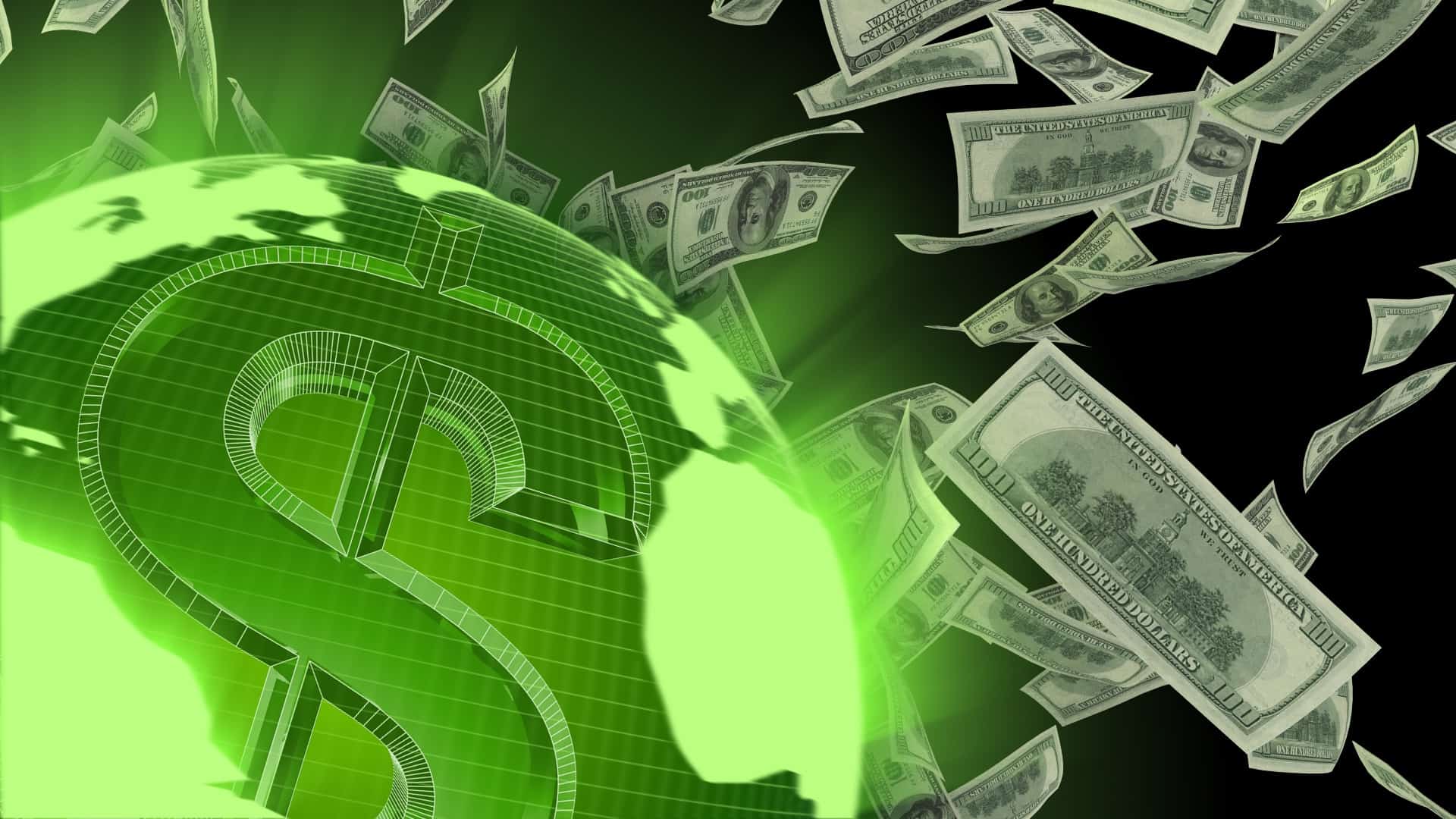Sometimes keeping your distance and taking a clutter-free approach is the way to go. Right now, more than ever, the fewer physical items you have to touch, the better.
Numerous benefits and advances in technology make paying bills online easier now than ever. The environment benefits from savings in paper and energy used for delivery and you benefit from not physically interacting with mail or running errands.
Nearly 60% of all bills are paid online. It’s much easier to keep track of your money in digital form. It’s also easier to handle a few accounts instead of piles of bills and envelopes that need to be mailed.
Getting started with online bill pay offers robust features for financial institutions and payment sites. There are features that make it easier to understand and track your money over conventional payment methods.
What is Online Bill Pay?
Online bill pay involves the transfer of funds from one account to another without physical media changing hands. Bills paid online can take the form of debit payments, credit card payments, or even digital checks. The exact method of the payment may vary but these various online methods remain functionally identical in regards to getting a bill paid.
Online bill pay isn’t cutting edge as an idea but it does use cutting edge technology to operate quickly and securely.
Generally, there are two ways to pay bills online. the first is to visit and set up accounts at each provider and merchant you use. This is called vendor pay.
The other way is through your bank. Online banking payments come with some guarantees from your financial institution, including on-time payment and restitution of fees if it is not.
How Does Online Bill Pay Work?
In simple terms, paying a bill online works the same as paper bills. A service provider or merchant sends you a bill and then you include a payment.
The difference is that the bills sent are electronic, and so are the payments.
Both the bill and the payment can be tracked in numerous ways. While some companies will send an invoice or bill via email, others will keep a record of bills and payments on their own sites.
Some payments use a transaction ID, a code that verifies that the bill was paid. Others attach electronic facsimiles of checks to record the payment.
When a vendor doesn’t have an electronic payment option through a website or marketplace of their own, online payment is still possible. Banks can issue electronic or paper checks. While you might think of this as an automated payment, it falls under the blanket terminology of online payment.
Setting It Up
For vendor payments, you need to visit each site and enter your payment information. Much like a paper bill, this includes confirming the billing address for your payment source. You then enter the account number and financial information including routing number or credit card number.
If the billing address for your card is different than your residence, that requires further information for utilities or bills tied to a physical address. Initial account creation and remembering the passwords into each site used is tedious for some but still a step above sending out physical media for each bill each time it must be paid.
It is far easier to keep track of everything through your own bank. Banks allow you to set up autopay or one-time payments through their sites. You need only access your account, activate the feature, and enter the account information for the payee.
The bank records the transaction the same as it would if you sent a check or made a purchase with a debit card.
When setting up pill payment through a bank or a vendor site, you have the option for recurring or one-time payments. In addition, you can choose what time of the month the payment is made.
It’s always beneficial to revisit your recurring payments semi-annually in case of changes in billing cycles.
With some payments, such as student loans, it’s possible, and handy, to make payments in lump sums rather than paying a specific invoice or bill. This helps you pay these off quickly while keeping your budget streamlined.
Prepaid Cards
It’s possible to use prepaid cards to enroll in online bill pay. Typically these cards will have the branding of one of the major credit cards on them and will need to be used as a credit card when selecting payment type. Others have accounting and routing numbers attached to them and work more akin to checks.
Some cards attach additional fees to use on a per-transaction basis. Make certain you read the material and FAQs carefully to avoid mistakes.
Prepaid cards make online payments possible for those with troubled credit and banking history, which is nice. What’s not nice is the additional fees and ability to zero out an account.
Benefits of Paying Bills Online
Setting up online payments through a bank offers several benefits over vendor payment methods. First, you only have to remember the passwords and logins for your bank. Second, because the payments are authorized from one central location, it’s easy to track where your money is going.
Depending on your type of account, you may have access to additional features that link automatically to financial software such as Quickbooks. This can make running a small business or completing taxes far easier. Most banks and sites also let you check the status of payments through a mobile app.
Working through your bank also offers the same types of financial security you receive for your physical assets.
With automatic payments, you don’t have to wait for the bills to come in the mail, banks simply issue out payment(s) from your account when your monthly bills come in or on a set date. This makes staying on top of everything a snap.
Cutting down on wasted paper is a major benefit to all forms of online bill payment. The savings you experience from not ordering new checks and paying for postage add up over a year.
Paying Bills Online for Free
Most banks offer online bill pay through your checking account or savings account. Bill pay through a prepaid card may have fees attached depending on the card.
If you’ve ever called in a payment to a utility company, you may be wary of online bill pay. Unlike phone payments, which often use third party carriers to complete the payments, online payments are direct so there is no entity to charge additional fees.
In addition to your bank or a vendor site, you can loop in various consolidation and accounting tools. These programs keep track of the bills coming in and the payments going out, providing you a secondary source of receipts of transactions. Tools and programs such as MyCheckFree, help you budget your expenses and cost nothing per transaction.
Online systems are robust but not complete. Banks offer the best features and widest reach but no single institution allows you to send money everywhere.
Speed?
Payments from a bank account are submitted on the day appointed or the day the bill is received. The difference depends on if you pay bills as they come or on a specific date.
With online pay, you don’t have to worry if a check will arrive on time or if you will have to argue a post date shows your intent. Payments go through almost instantly and show up the day you pay, even on weekends and holidays.
When looking at a record of your payments, you may see that the payment is pending up to 72 hours after the bill itself was due. Not all institutions and vendors process their payments piecemeal. You are more likely to see this when a payment is made as a credit card. Recipients sometimes wait to batch the payments in one run so you see a pending payment through your bank until it finishes processing.
Safety?
Online payments from banks are insured the same as the physical money inside the building. Payment information is encrypted and sent with a system of tags that identify the recipient and prevent interception or redirection.
Vendor sites also use encryption in their checkout and bill pay sections. The encryption used, and the exact protocols, changes depending on the architecture of the marketplace software.
Online bill pay is safer than other forms of payment as it is harder to duplicate and the response time makes it easy to see and counter problems.
Glitches in payment software creating duplicate charges or credits are nearly unheard of at this point. The records of the transaction on both sides offer a clear trail for resolving such issues if they do arise.
Paying Bills Online and Saving Money
For the end-user, paying bills online is simple, safe, and fast. For financial institutions, it saves time and resources while providing advanced transparency to customers and boardrooms alike.
Saving money is important for everyone. When you look for ways to lower your bills, keep in mind that online savings accounts offer flexibility and security for putting money aside and can also be set up to transfer automatically each month.



